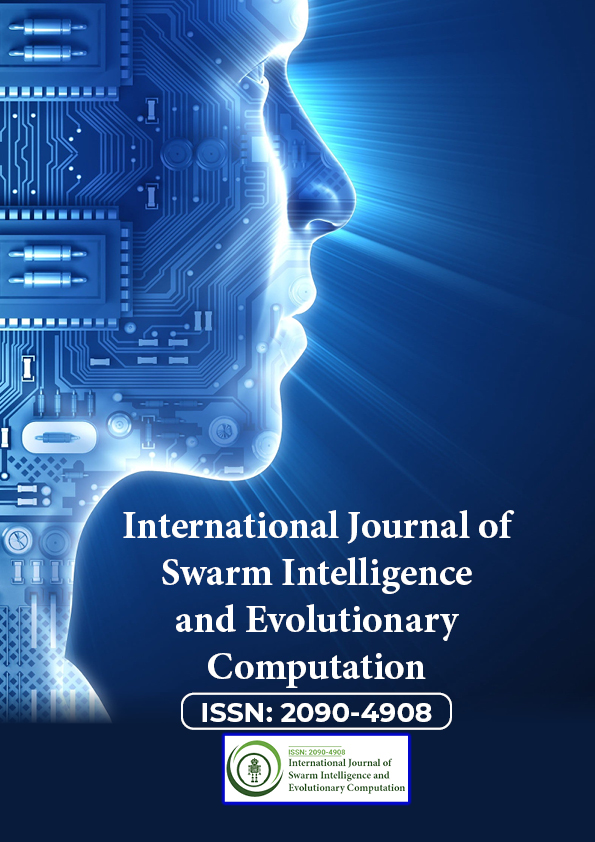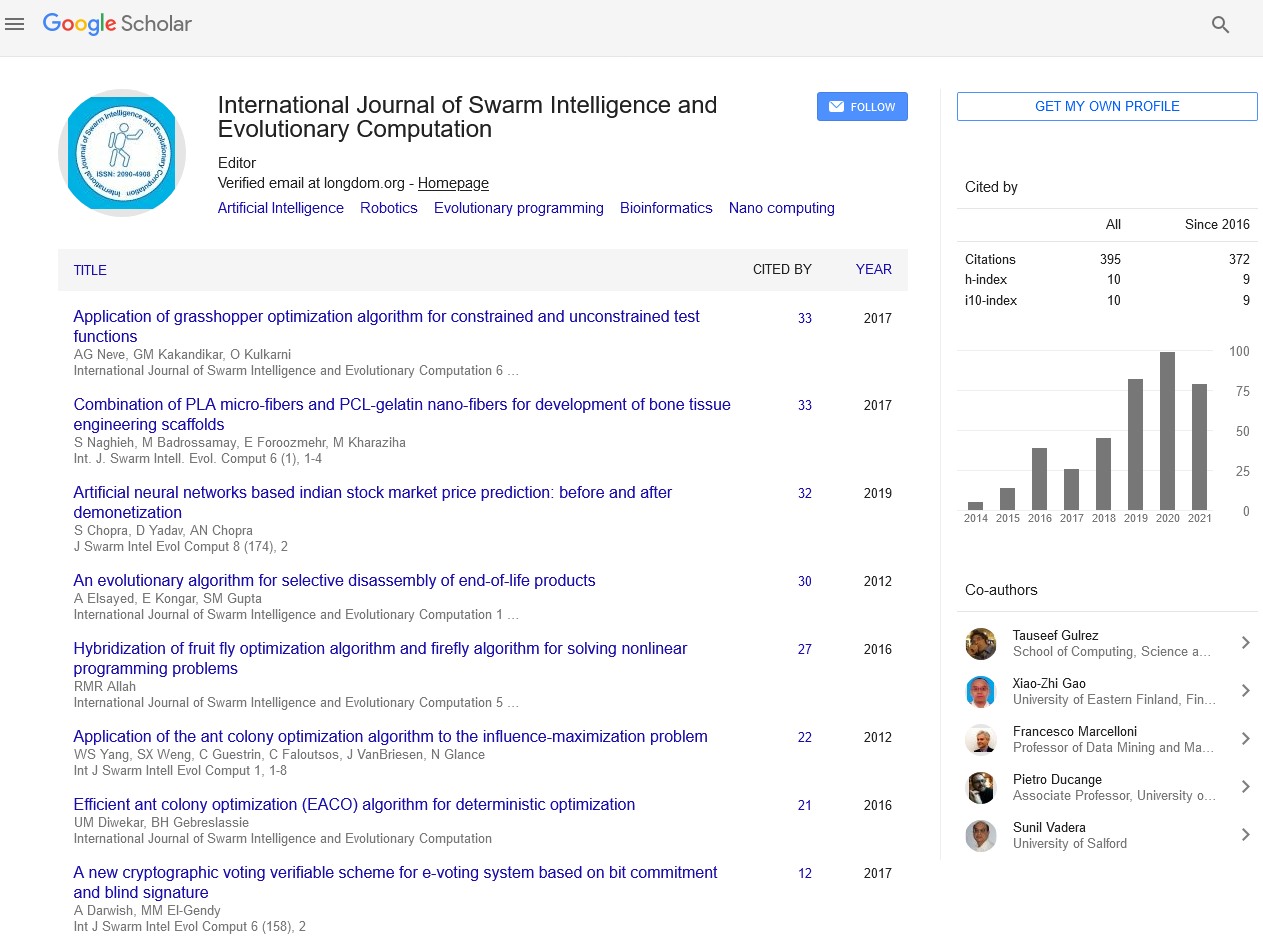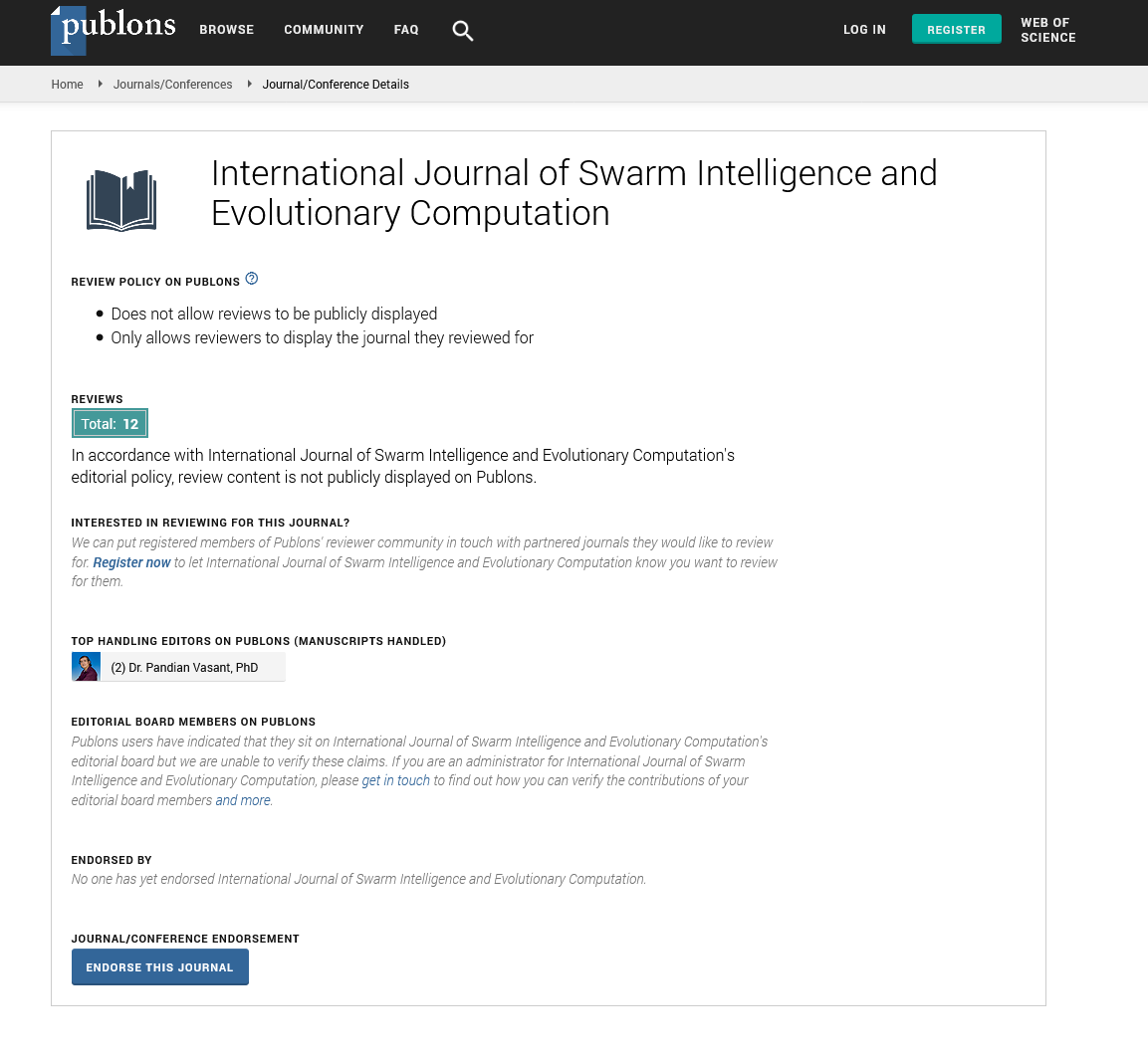Indexed In
- Genamics JournalSeek
- RefSeek
- Hamdard University
- EBSCO A-Z
- OCLC- WorldCat
- Publons
- Euro Pub
- Google Scholar
Useful Links
Share This Page
Journal Flyer

Open Access Journals
- Agri and Aquaculture
- Biochemistry
- Bioinformatics & Systems Biology
- Business & Management
- Chemistry
- Clinical Sciences
- Engineering
- Food & Nutrition
- General Science
- Genetics & Molecular Biology
- Immunology & Microbiology
- Medical Sciences
- Neuroscience & Psychology
- Nursing & Health Care
- Pharmaceutical Sciences
Commentary - (2025) Volume 14, Issue 2
Simulation to Embodiment: Realizing the Potential of Swarm AI in Physical Systems
Rashin Mohseni*Received: 18-Apr-2025, Manuscript No. SIEC-25-28708; Editor assigned: 21-Apr-2025, Pre QC No. SIEC-25-28708 (PQ); Reviewed: 05-May-2025, QC No. SIEC-25-28708; Revised: 12-May-2025, Manuscript No. SIEC-25-28708 (R); Published: 19-May-2025, DOI: 10.35248/2090-4908.24.14.425
Description
While much of the research in Swarm Intelligence and Artificial Intelligence has focused on simulations and virtual environments, the true transformative potential of Swarm AI lies in its embodiment in physical systems, particularly in the realm of robotics. The ability to deploy intelligent swarms of physical robots that can autonomously coordinate and collaborate to perform complex tasks in the real world opens up a vast array of exciting possibilities and presents unique engineering challenges.
Simulated environments provide ideal platforms to model, test, and refine swarm behaviors without the costs, risks, and constraints associated with physical systems. Within simulations, researchers can easily manipulate variables, observe emergent phenomena, and iterate designs rapidly. Swarm algorithms such as Particle Swarm Optimization (PSO), Ant Colony Optimization (ACO), and Boids models have demonstrated impressive capabilities in tasks including path planning, resource allocation, and pattern formation. Multi-agent reinforcement learning and evolutionary strategies have further enriched the toolkit for developing decentralized intelligence. However, the fidelity of simulations is inherently limited; they often fail to capture real-world uncertainties like sensor noise, mechanical wear, or unstructured environments.
Realizing embodied Swarm AI requires addressing issues such as inter-robot communication in noisy and dynamic physical environments, robust and distributed sensing and perception capabilities, and the development of control algorithms that can account for the physical constraints and uncertainties of real-world interactions. Researchers are exploring various communication modalities for robotic swarms, including radio frequency, infrared, and visual signaling, each with its own trade-offs in terms of range, bandwidth, and robustness. Developing distributed sensing strategies that allow individual robots to perceive their local environment and share relevant information with their neighbors is also crucial for enabling effective collective behavior. Furthermore, designing control algorithms that can translate high-level swarm objectives into low-level motor commands for individual robots, while also ensuring stability and robustness in the face of disturbances and uncertainties, remains a significant challenge.
Despite these challenges, significant progress is being made in the field of embodied Swarm AI. We are seeing the development of robotic swarms capable of performing tasks such as coordinated navigation, object manipulation, distributed construction, and environmental exploration. These advancements are being driven by innovations in areas such as miniaturization of robotic platforms, development of more efficient and robust communication and sensing technologies, and the creation of novel control architectures that effectively integrate AI-driven high-level planning with SI-inspired low-level coordination. The transition from simulation to embodiment is crucial for realizing the full potential of Swarm AI, allowing us to leverage the collective intelligence of robot swarms to address real-world problems in areas such as disaster response, infrastructure maintenance, agriculture, and manufacturing.
From simulation to embodiment, the journey of Swarm AI reflects the broader evolution of artificial intelligence from theory to tangible impact. By overcoming the barriers of physical realization, Swarm AI can revolutionize how we design autonomous systems that are resilient, adaptive, and scalable. Whether it's fleets of drones coordinating relief efforts, underwater robots monitoring ocean health, or planetary explorers mapping alien terrains, embodied swarms offer a glimpse into a future where intelligence is not centralized, but distributed across countless cooperative agents. The key to this future lies in bridging the simulation-embodiment divide—and embracing the complexity, uncertainty, and richness of the physical world.
Citation: Mohseni R (2025). Simulation to Embodiment: Realizing the Potential of Swarm AI in Physical Systems. Int J Swarm Evol Comput. 14:425
Copyright: © 2025 Mohseni R. This is an open-access article distributed under the terms of the Creative Commons Attribution License, which permits unrestricted use, distribution and reproduction in any medium, provided the original author and source are credited.


